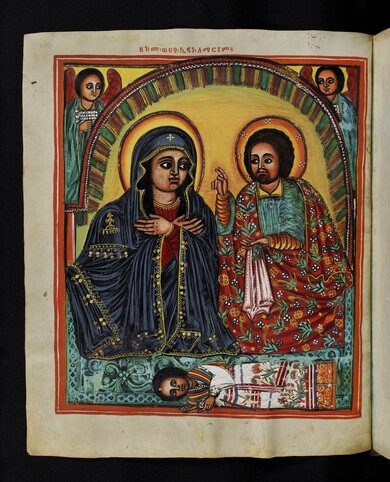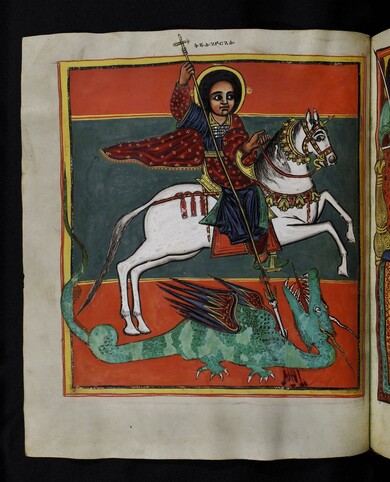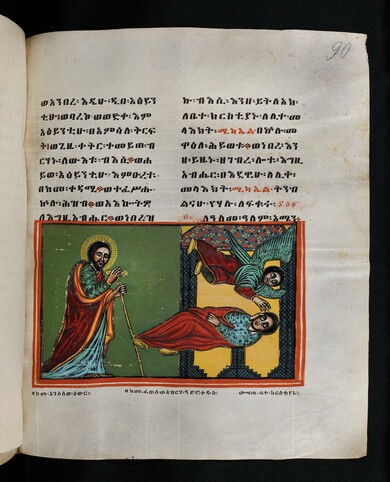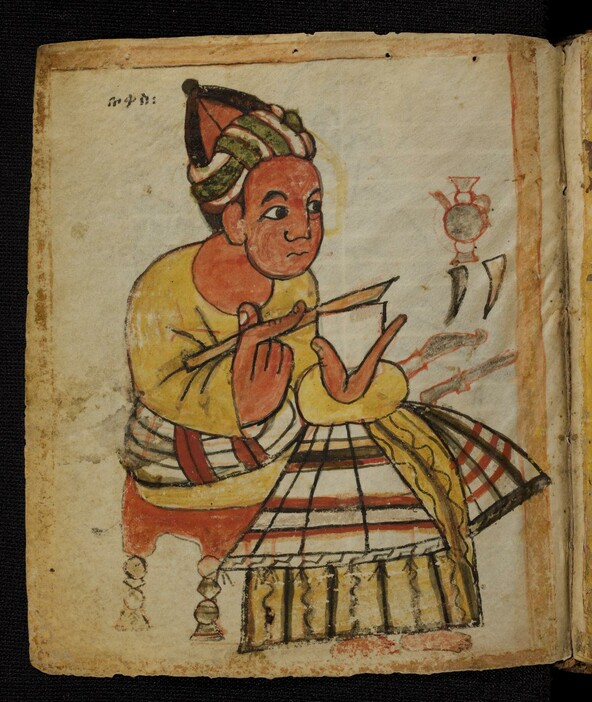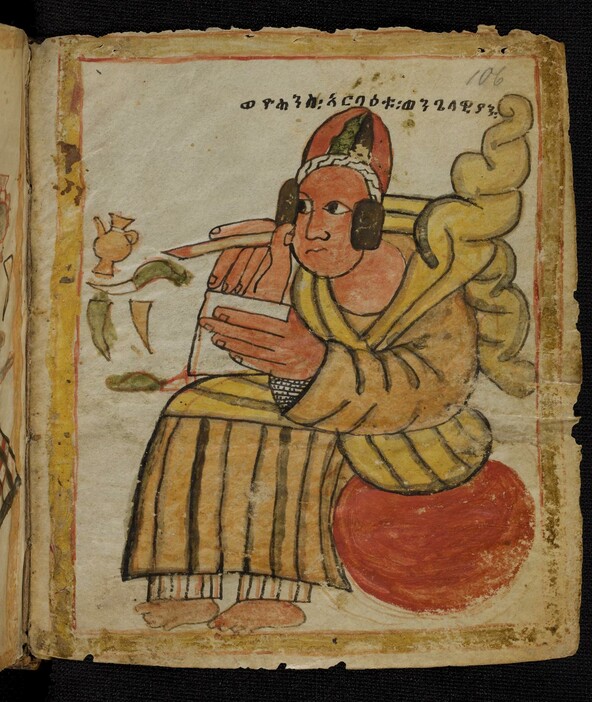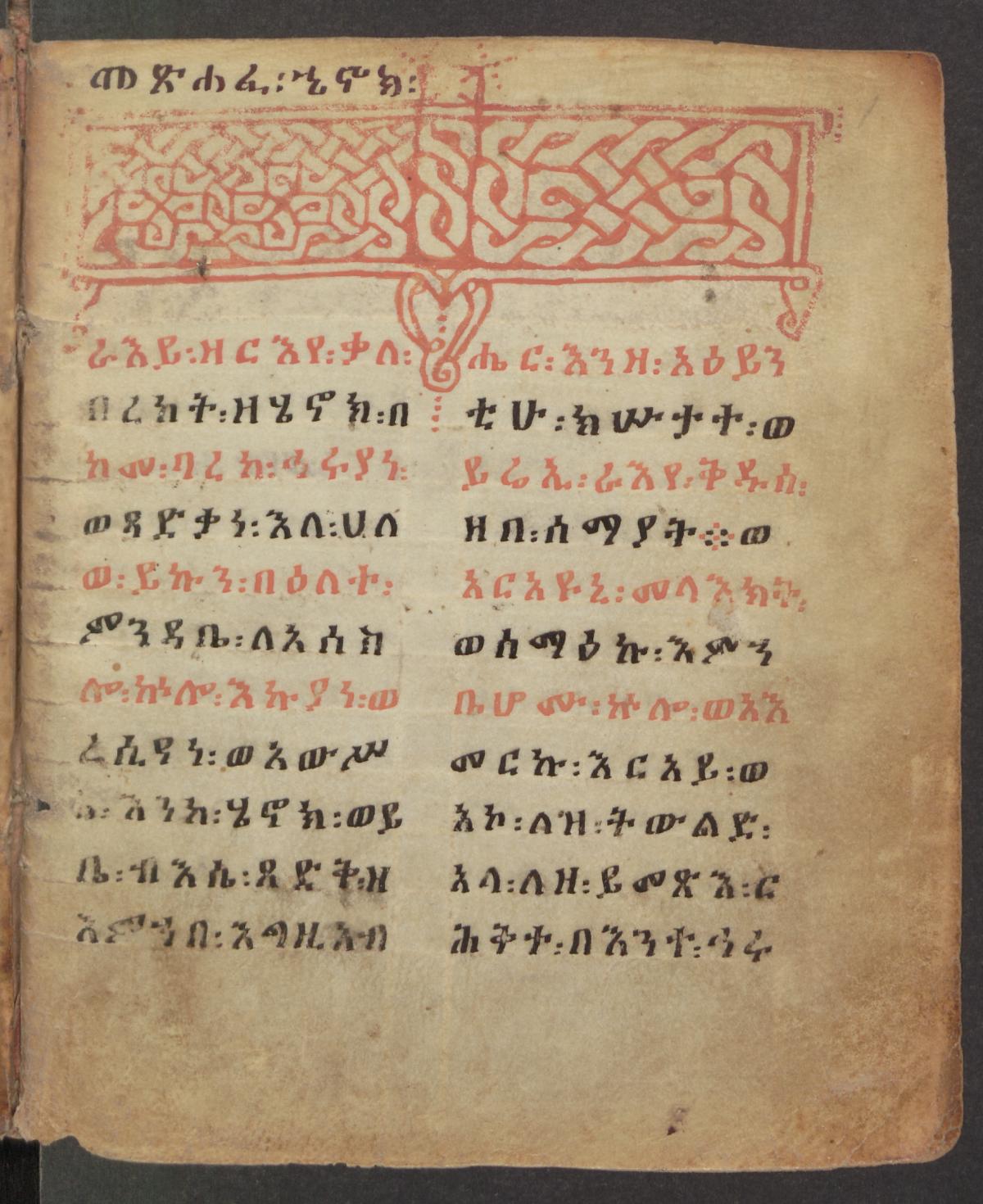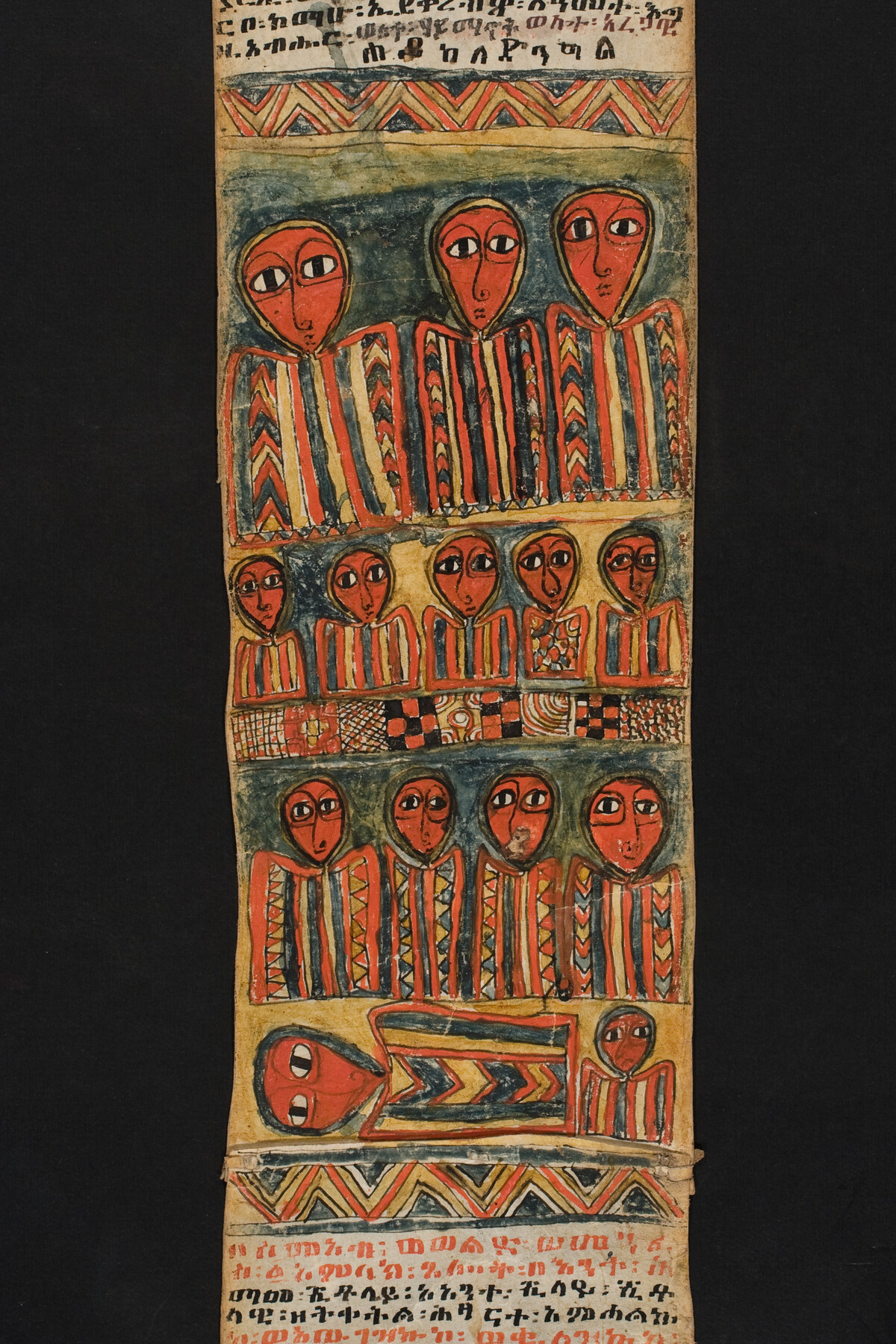Orient
Ethiopian manuscripts
The first Ethiopian manuscripts were soon included in the holdings of the "Churfürstlichen Bibliothek zu Cölln an der Spree", founded in 1661. Among the oriental manuscripts purchased by the scholar Theodor Petraeus in 1682 were three Geʿez manuscripts – described and catalogued by the founder of Ethiopian studies, Hiob Ludolf himself (Dillmann 1878, p. i). His Latin texts are attached to these first Ethiopian Berlin manuscripts. The Ethiopian collection also owes its further enlargement to illustrious names: The orientalist and Prussian envoy Heinrich Friedrich von Diez, the great Egyptologist and director of the now Royal Library of Berlin Karl Richard Lepsius or the orientalist Julius Heinrich Petermann also brought Ethiopian manuscripts back from their travels or acquired them at auctions. Donations and other targeted purchases on site allowed the collection to grow rapidly. August Dillmann, himself a luminary of Ethiopian studies, was able to list and describe 87 in his Verzeichniss der abessinischen Handschriften, which appeared in 1878 as the third volume of the Handschriften-Verzeichnisse of the Royal Library in Berlin. Today, the collections of the Oriental Department of the Berlin State Library contain 335 Ethiopian manuscripts. Most are undated and probably date from the 17th to 19th centuries. There are some outstanding specimens among them, such as a hagiographic collection (Legends of the Saints and Feast Days, Ms. or. fol. 117), which still comes from the Petraeus collection and is one of the oldest pieces with a date to the 15th/16th century, a large-format Prachthomiliar (collection of sermons) from the 17th century (Ms. or. fol. 394), which is equipped with fifty colored and finely crafted paintings, or the Psalter from the 15th/16th century (Ms. or. quart. 172), which August Dillmann described as "the most valuable of the many psalm manuscripts in our collection".
Also noteworthy is the stock of popularly illustrated Ethiopian magic scrolls (especially under Ms. or. oct. 4054 to Ms. or. oct. 4072). Microfilms of manuscripts from the Tanasee region, which were photographed by Ernst Hammerschmitt in Ethiopia in 1968 as part of a DFG project, represent a special collection. Under the shelf mark "Tanasee 1-182" they were sorted, described in three catalogue volumes and made accessible to research.
Ms. or. fol. 394 - Ethiopian "Prachthomiliar", 17th century
This large-format codex is one of the most valuable pieces in the collection of Ethiopian manuscripts. It is bound in brown leather embellished with blind embossing and contains 50 carefully crafted paintings. The name of the patron of the manuscript is no longer completely legible, but it was certainly a member of the ruling house.
Petermann II Nachtr. 29 - Ethiopian Book of Enoch. c. 16th century
The Book of Enoch belongs to the apocryphal biblical texts and is only part of the Old Testament canon in the Ethiopian Church. As a result, it was reliably passed on and handed down completely. The Ethiopian Book of Enoch is thus an invaluable source for the history of the Church and dogma.
